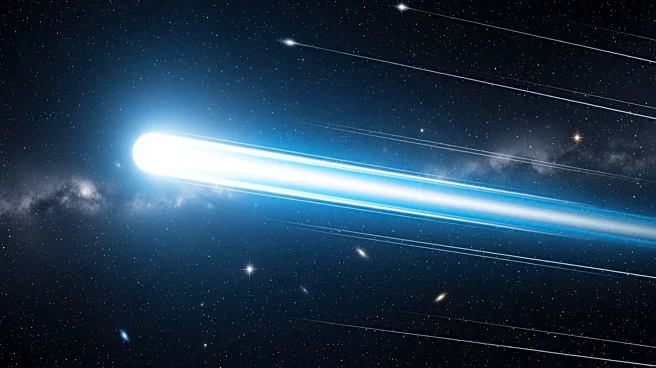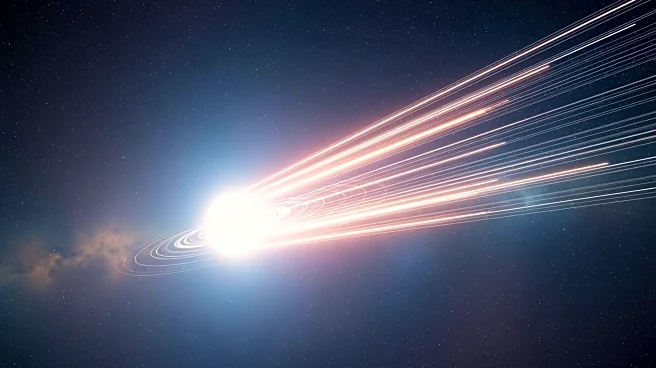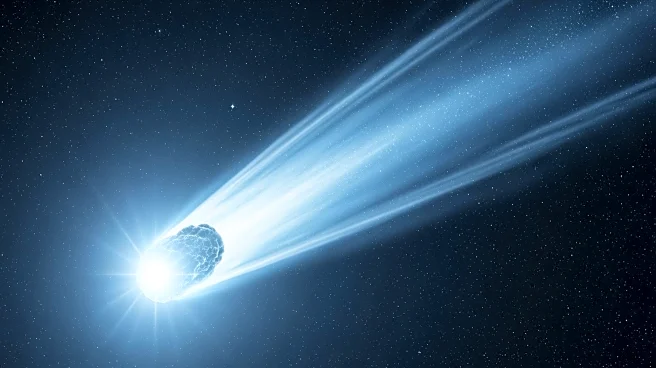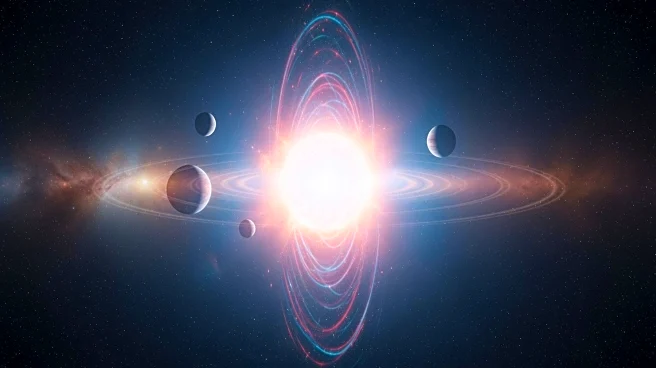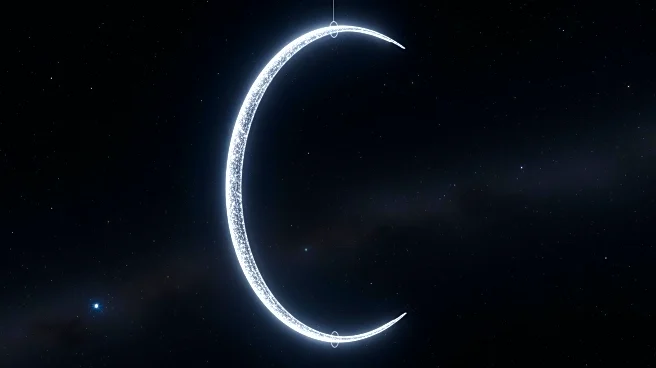What's Happening?
Recent findings suggest that the solar system is moving through space at a speed three times faster than previously thought. This discovery was made using the Low Frequency Array (LOFAR) radio telescope
network and other radio telescopes, which revealed a significant disparity in the distribution of radio galaxies. The team behind the research found an anisotropy in the distribution of radio galaxies that was 3.7 times stronger than predicted by the standard model of cosmology. This model describes the evolution of the cosmos since the Big Bang. The findings challenge current assumptions about the universe's structure and evolution, suggesting that the solar system's motion is faster than current models predict.
Why It's Important?
The discovery has significant implications for the standard model of cosmology, which is the prevailing framework for understanding the universe's structure and evolution. If the solar system is indeed moving faster than expected, it could necessitate a reevaluation of fundamental assumptions about the large-scale structure of the universe. This could impact various fields of astrophysics and cosmology, potentially leading to new theories and models. The findings also highlight the importance of radio galaxies in understanding cosmic motion, as their distribution provides insights into the universe's dynamics.
What's Next?
The research team suggests that further investigation is needed to understand the implications of their findings. This may involve reexamining the distribution of radio galaxies and considering alternative explanations for the observed anisotropy. The scientific community may need to explore new models or adjust existing ones to account for the faster motion of the solar system. Additionally, further studies using different observational techniques could help verify the results and provide a more comprehensive understanding of cosmic motion.
Beyond the Headlines
The discovery raises questions about the uniformity of radio galaxy distribution and its role in cosmological models. It suggests that the universe may be more complex than previously thought, with potential variations in cosmic structures that have yet to be fully understood. This could lead to a deeper exploration of the universe's composition and the forces driving its evolution.
